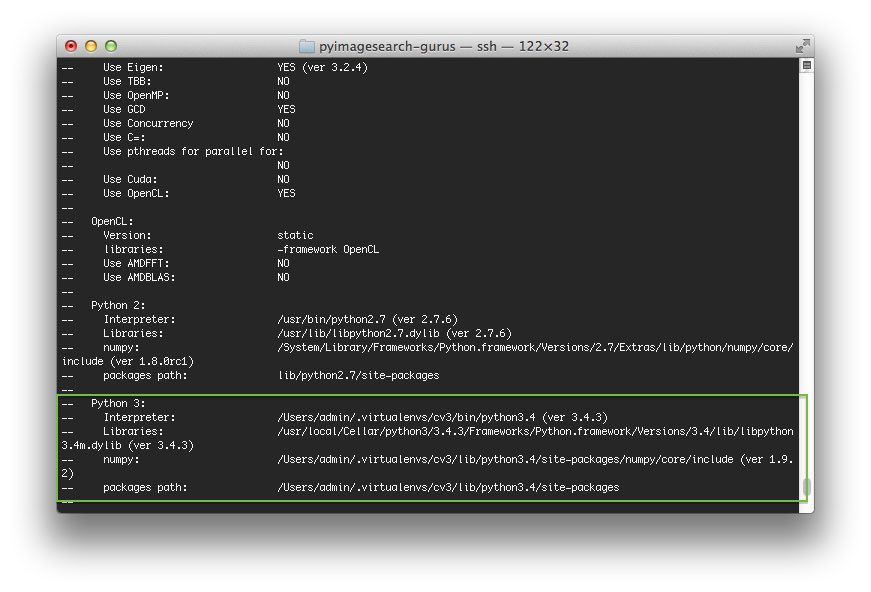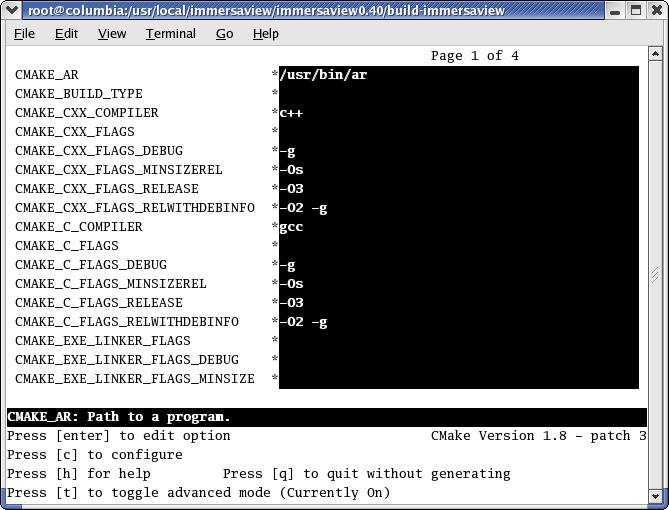Computer Vision is like deep space, the more you learn about it you realise the field is vast, mesmerising and will leave you in awe of what can be achieved. Recently I came across a work related opportunity to implement a prototype application based on computer vision and object recognition. This led me to which is an open source computer vision library available for various platforms Mac OS X, Windows, Linux, iOS and Android.
Problem with cmake on Mac, Geant 4.9.5 Forum: Installation and Configuration Date: 10 Feb, 2012 From: Milan Matos Hello, I am trying to install Geant 4.9.5 from source on intel MacBook Pro running Snow Leopard 10.6, cmake version 2.8.7, gcc version i686-apple-darwin10-gcc-4.2.1, g++ version i686-apple-darwin10-g++-4.2.1. How to install CMake on Mac OS & Linux Posted on October 25, 2013 by chhailymoun There are pre-compiled binaries available on the Download page for many UNIX platforms. Linux, Mac OS, UNIX. There are pre-compiled binaries available on the Download page for some UNIX platforms. One may alternatively download and build.

But before I could start playing around with, I had to first install it on my Macbook which was supposed to be easy but while going through different tutorials, 5 to be accurate it became clear that each tutorial was missing one or the other critical step which was preventing me to complete the installation. Finally, I got through the installation and decided on writing a tutorial which had the precise steps to install OpenCV on Mac OS X that should help anyone looking to install on their Mac OS X’s without any hassle or confusion. The tutorial will provide the steps to install and test OpenCV for Java. We will be using to install, to compile and generate package. Using makes its easy to install but I will also provide an alternate installation procedure for. JDK (Java SE Development Kit) Download the latest JDK from.
Cmake Gui Mac
The current JDK version is Java SE 8u102. Command Line Tools Either install on your laptop which will install Command Line Tools along with the Xcode App else you can paste this command in the terminal and it will install only the Command Line Tools xcode-select install Homebrew Install Homebrew using the following command in the terminal: /usr/bin/ruby -e “$(curl -fsSL )” Then run: brew update Even though this is not required since we just installed Homebrew. Its a good practice to run ‘brew update’ on a regular basis which allows Homebrew to download updates and patches. After ‘brew update’ runs successfully, now run: brew doctor ‘brew doctor’ makes sure that any package that has been installed via Homebrew is in place and will not cause an issue with the system. If any package might cause an issue then at the end of the test ‘brew doctor’ will show either warning/error mentioning the package that might cause an issue/is causing an issue and will also provide a hint for fixing the issue.
Ant To install, run brew install ant Now we are ready to go to the next step that is compile and generate OpenCV for Mac OS X. OpenCV Download OpenCV files from. For the purpose of this tutorial we will using OpenCV version 3. As of today the current version is 3.1. Once the zip file is downloaded, unzip it. Create a folder called ‘ OpenCV-Bundle‘ in your User Directory /username.
To find your username type: whoami in the terminal and you will get your user name Place the unzipped folder in the ‘ OpenCV-Bundle‘ folder that you have created. Also download OpenCV Contrib from, it contains extra modules for OpenCV. Download and place ‘OpenCV Contrib’ folder in the same ‘ OpenCV-Bundle‘ that was created earlier. CMake Now we will use CMake Application to compile and generate OpenCV package that can be used on our laptop for development. CMake is an open-source, cross-platform family of tools designed to build, test and package software. Download CMake for Mac OS X via. Download the.dmg file from the Platforms section.
Once the download is complete open the dmg and move CMake to Applications Folder. Open CMake App 1.

Asus Zenfone 3 5 2
Click on ‘Grouped’ and ‘Advanced’ so that both are active. Click on Browse Source and go to the OpenCV-versionnumber folder within ‘/username/ OpenCV-Bundle‘ folder and select Open. Clink on Browse Build and go to the ‘OpenCV-versionnumber’ folder within ‘/username/ OpenCV-Bundle‘ folder. Click on ‘New Folder’ and name the folder ‘build’. This folder will be where we compile and generate OpenCV package. Select the ‘build’ folder and click Open Before we go ahead and configure make sure ‘Grouped’ and ‘Advanced’ are selected.
Click Configure and a pop up will open. Select ‘Unix Makefiles’ under ‘Specify the generator for this project’. Select ‘Use default native compilers’. Click Done 6. The configuration process will take 1-2 minutes. Once its complete you will see the following output on your screen. Don’t worry about the red warnings.
We will fix that in the upcoming steps. We will now select/deselect options that are needed to install OpenCV for Java. Expand CMake and enter ‘Release’ for CMAKEBUILDTYPE. Expand OpenCV and select the ‘modules’ folder OPENCVEXTRAMODULESPATH.
